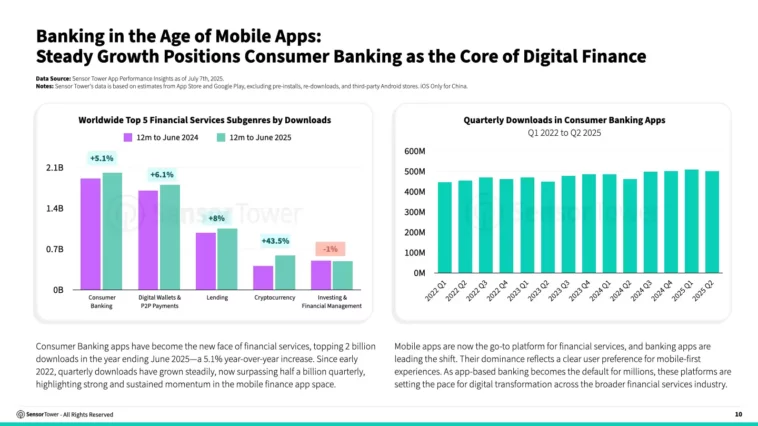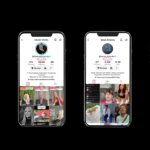Consumer banking apps have firmly established themselves as the primary gateway to financial services, surpassing 2 billion global downloads in the year ending June 2025—a 5.1% year-over-year increase, according to Sensor Tower. This milestone underscores how mobile-first banking is shaping the future of personal finance worldwide.
Since early 2022, quarterly downloads of consumer banking apps have steadily grown, now exceeding half a billion every quarter. This sustained momentum highlights a fundamental shift: for millions, mobile apps are no longer an alternative but the default way to manage money.
Much of this growth is driven by emerging markets, where banking apps are helping close critical gaps in financial infrastructure. Top performers such as Nubank in Brazil, Kotak Bank’s 811 app in India, and Indonesia’s BRImo are leading a surge in app adoption where many users lack access to physical bank branches or traditional accounts.
By providing cost-effective, convenient services—from account opening to bill payments and money transfers—these apps have made it possible for millions to move from unbanked to app-banked. Markets like India, Colombia, and Mexico continue to see banking apps play a pivotal role in expanding financial inclusion.
The user profile for banking apps varies significantly across regions. In India, for example, male users account for an overwhelming 82% of the total user base, while markets like Japan and the U.S. have more balanced gender splits. Young adults aged 25–34 remain the dominant segment worldwide, with Southeast Asia also seeing notable engagement from users under 25.
These demographic insights matter. They reveal where financial institutions can better tailor products, design more inclusive services, and target underserved audiences. They also show that, while mobile banking adoption is booming, there’s room to broaden its reach—especially among women and older age groups.
A closer look at Indonesia’s BRImo illustrates how successful banking apps align marketing strategies with user behavior. With a user base that is 70% under 35 and 62% male, BRImo’s ads focus on young, mobile-first Indonesians. Campaigns range from promotions for grocery deliveries and car giveaways to gold-saving plans targeting crypto-savvy users—reflecting a sharp understanding of its audience.







Comments
Loading…